Writer’s Notice: This can be a visitor put up by Aaron Kuehn. Aaron is a former chair of BikeLoud PDX, is keen about wayfinding, and wrote a collection of articles for BikePortland on bikeway design.
Early Sunday morning, because the springtime solar warmed the asphalt, a bunch of almost 20 curious Portlanders, planners, and advocates gathered in hi-viz vests to roll up their sleeves—after which roll by a notoriously treacherous intersection at SE seventh and Sandy.
The occasion, listed on the Shift calendar because the Avenue Plaza Check Journey, was no extraordinary neighborhood suggestions session. As a substitute of simply viewing plans on a board, contributors took half in a live-action, hands-on “planning by doing” course of: sketching new lanes, medians, and switch bins with tape and cones, then test-riding totally different configurations to really feel what labored finest. The purpose? Refine bikeway design choices for a difficult five-way intersection that’s each a pivotal hyperlink within the seventh Ave Neighborhood Greenway and a part of an evolving public plaza.
This space has lengthy been a sore spot for individuals on bikes. In a 2023 BikePortland article, Taylor Griggs described SE seventh and Sandy as a “sketchy intersection,” the place crossing Sandy northbound means darting throughout a number of lanes of fast-moving automotive visitors with restricted visibility. “It’s some of the difficult maneuvers I frequently make,” she wrote. “I dread the expertise each single time.”

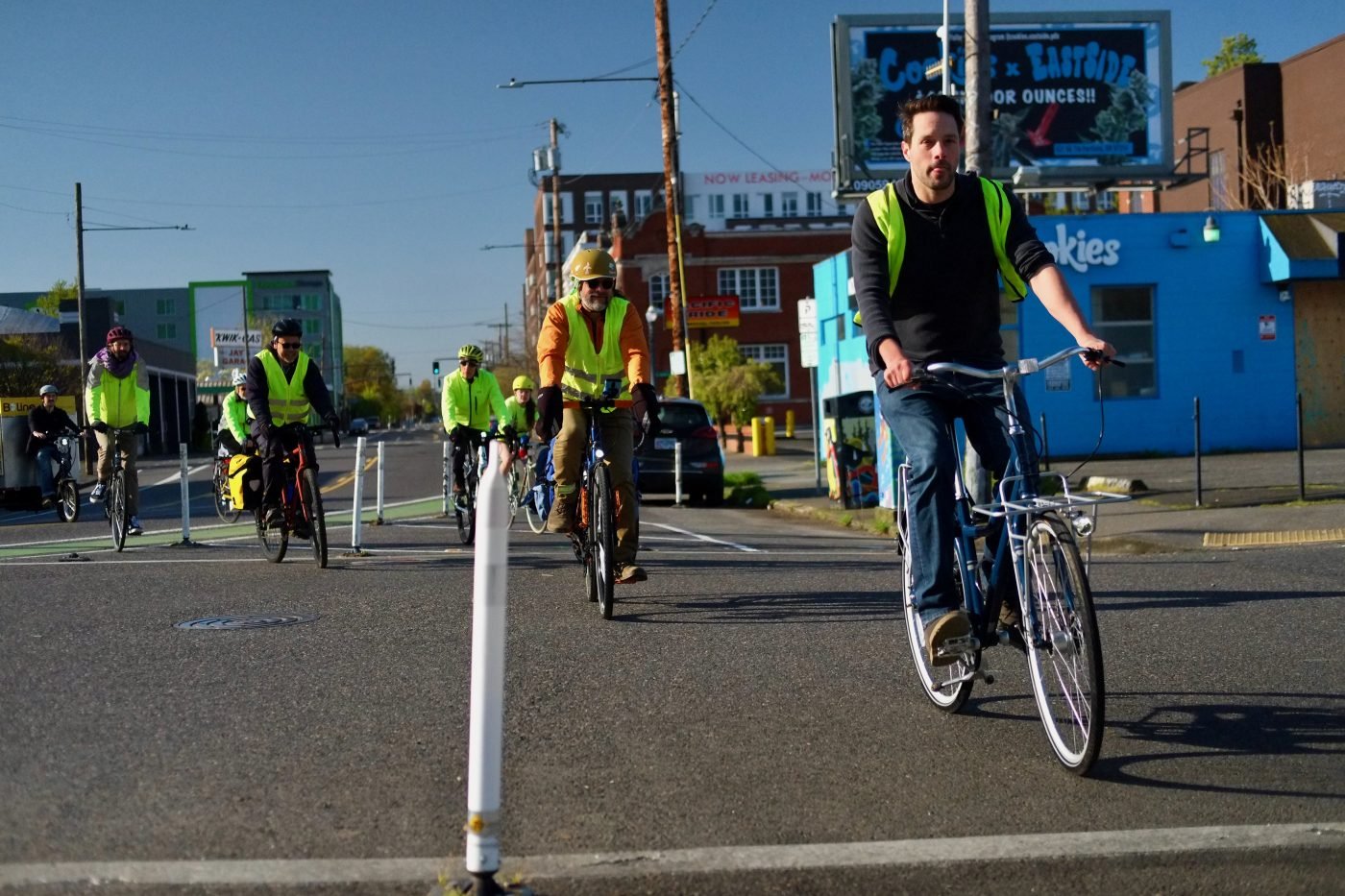
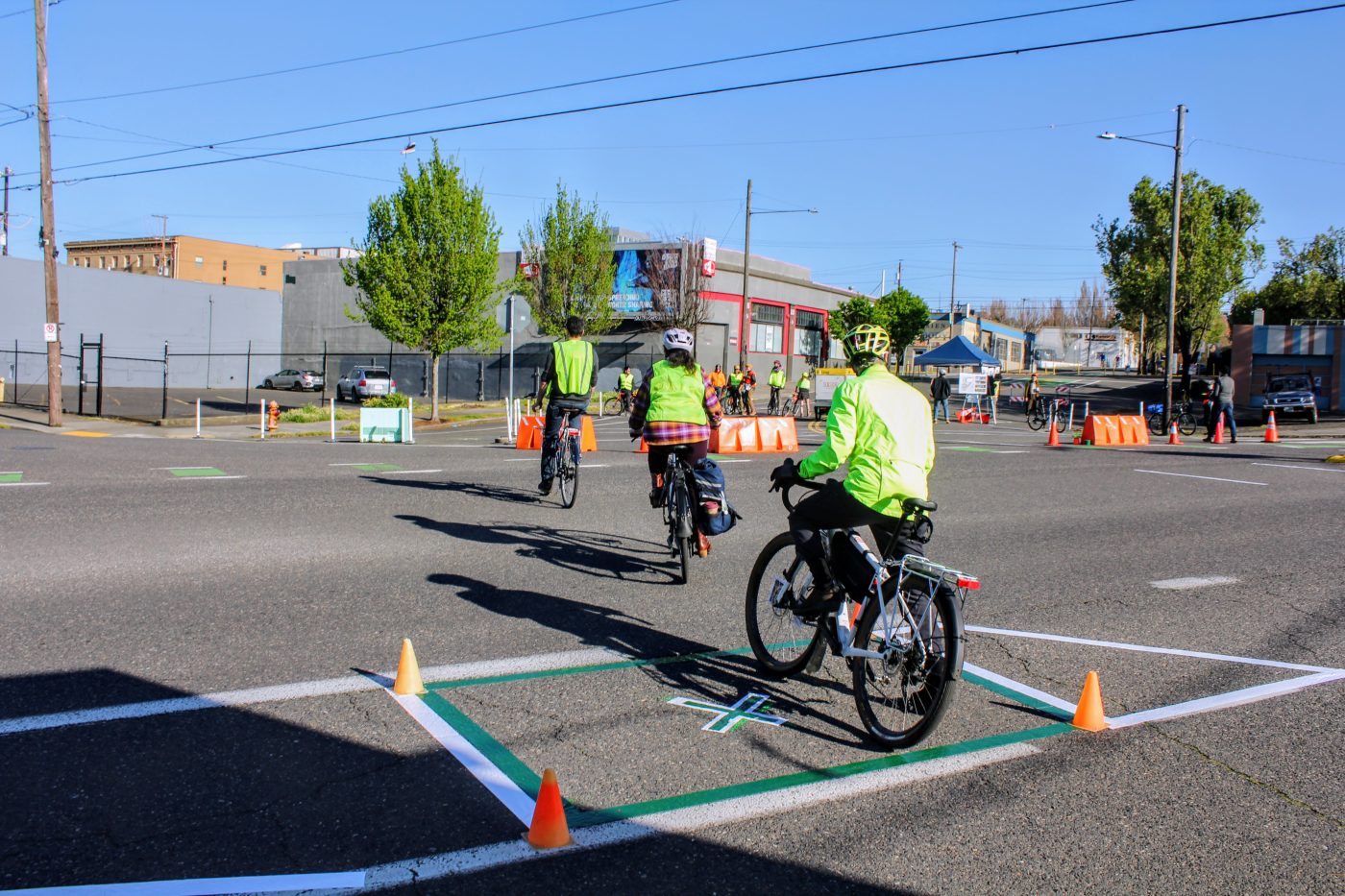
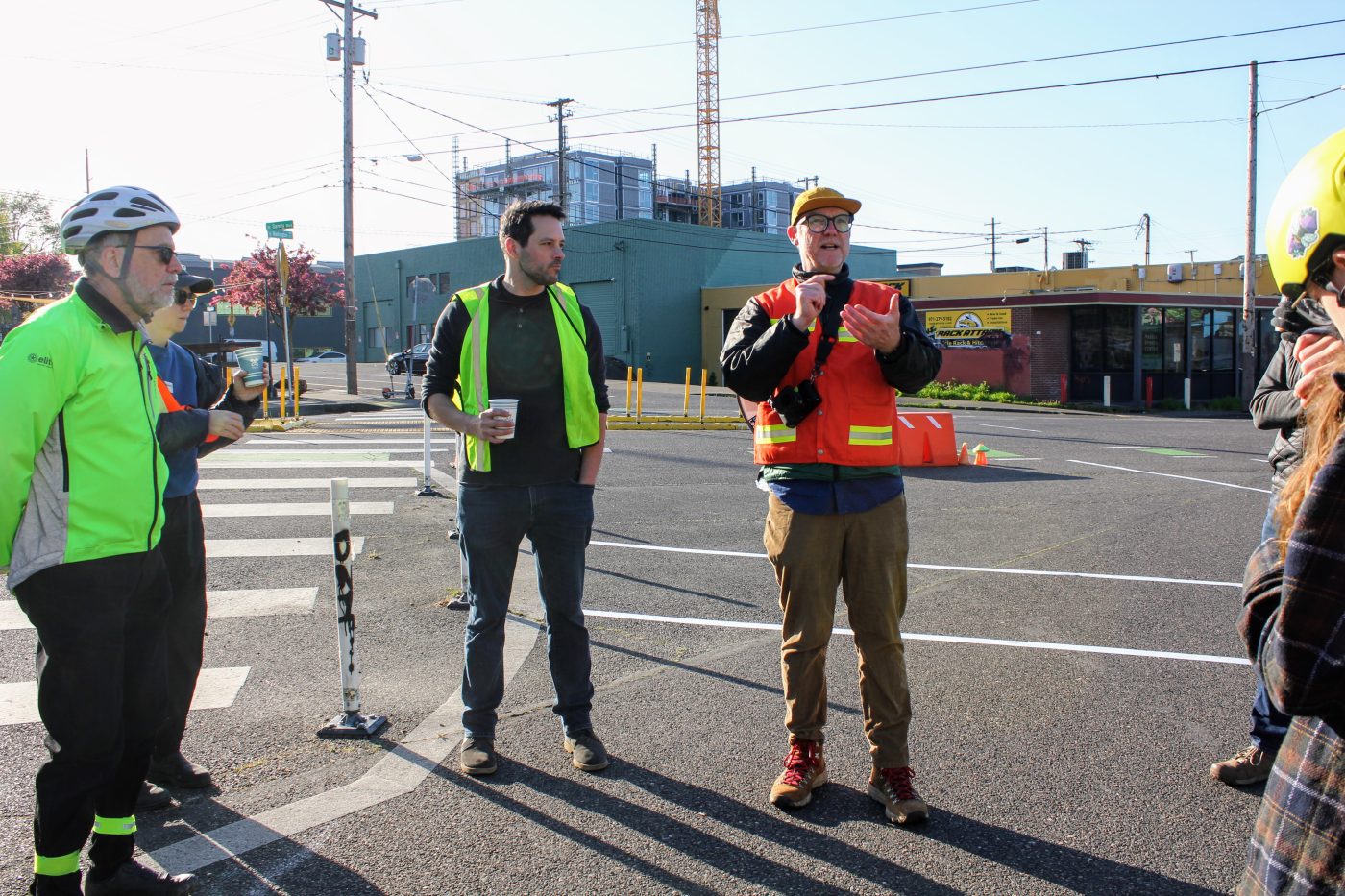
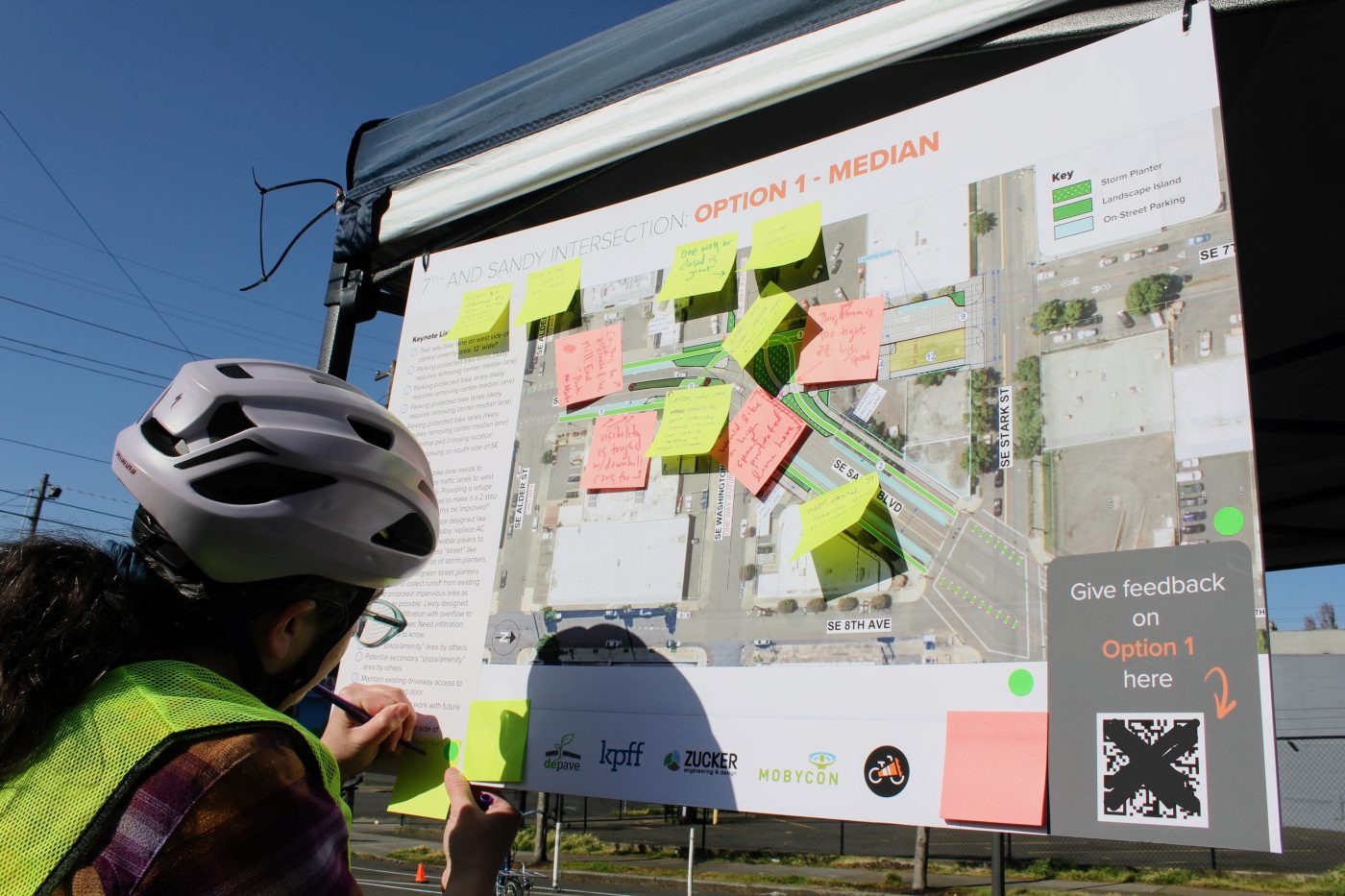

Over the previous few years, ongoing efforts have aimed to reimagine this house—not only for security, however for public life. Depave’s 2022 block occasion previewed the potential of a people-centric plaza, and extra lately, a BikePortland video in 2024 highlighted final summer time’s artistic reuse of house—and lingering issues from riders in regards to the security and luxury of the short-term bikeway winding by it.
Sunday’s test-ride occasion constructed on all of that, bringing a brand new degree of focus and nuance to the dialog. It was led by a singular collaboration: the nonprofit Depave, now in its fourth 12 months of iteration on the plaza; Adam Zucker, an engineer who beforehand developed a landscaped plaza close by; Mobycon, a Dutch agency recognized for high-quality bikeway planning; engineering consultants KPFF; and BikeLoud, the grassroots advocacy group that helped set up and facilitate the trip.
Importantly, the newest design choices have been drafted by KPFF and Mobycon, and the on-the-ground suggestions session was led by me on behalf of BikeLoud. After finishing a heatmap-style examine displaying that folks on bikes principally use the shortest path to cross the positioning, biking this stretch myself a number of instances per week, and in search of the following breakthrough in community-focused planning and design, I felt it was essential that this train be pushed by action-oriented planning: an underutilized methodology that trades static renderings for real-world testing, particularly when the stakes are excessive and the house is complicated.
And this website could be very complicated. It’s not simply the five-way geometry, however the steep grade, the blind flip, the car speeds, and the combo of journey modes that make this a vital take a look at case. It’s additionally an area in transition—from redundant roadway to public plaza—which means that transportation and placemaking have to coexist, not compete. For different plazas in Portland and future segments of the Inexperienced Loop, such a engagement might be a mannequin.


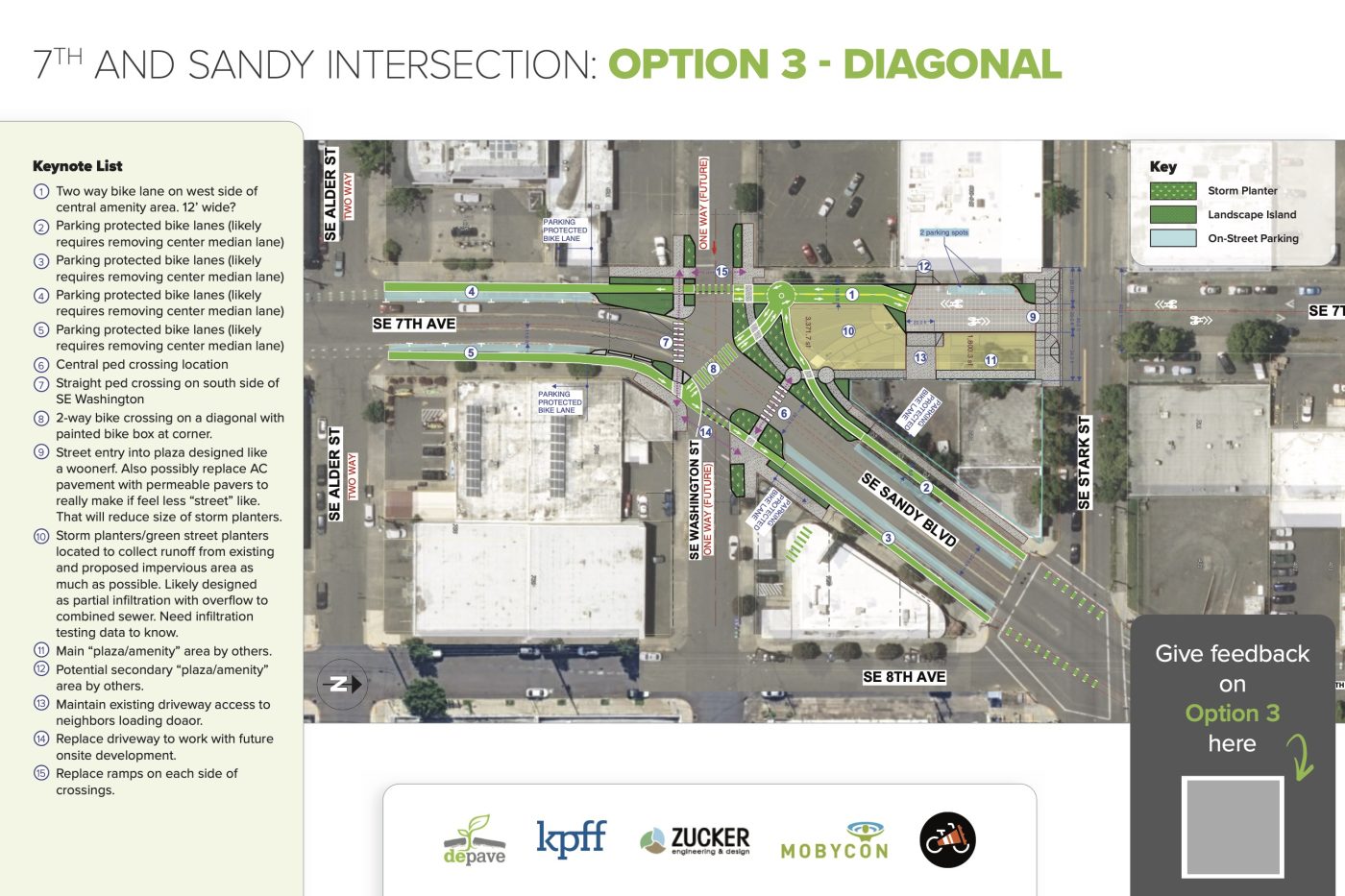
The conversations on the pavement have been sensible and cooperative. Volunteers debated the perfect flip angles for visibility and lane placements. Some emphasised the necessity for extra direct routes for vehicular biking; others centered on the right way to make the Sandy crossing intuitive and reassuring for all customers. Everybody introduced a useful lens: riders who use the intersection every day, planners steeped in Dutch biking infrastructure—even freight operators like B-Line City Supply are invested within the bikeway and the plaza’s success.
The design staff is reviewing the suggestions collected that day and can use these observations to form the following short-term buildout of the plaza, scheduled to open August 9 by September 19. Hopefully, Depave will safe the extra funding wanted to lastly construct the plaza utilizing everlasting supplies—and by that point, the design can have been completely examined by all these trials.
Sure, action-oriented planning can take extra time and sources than conventional strategies—but it surely additionally surfaces higher concepts. When individuals take a look at out designs in actual life, they offer extra helpful suggestions. They discover issues you’ll be able to’t see on paper. They revise. They usually come away with a way of shared possession. There have been some regrets expressed that this design method wasn’t used at different complicated junctions within the bike community—but in addition hope that it is perhaps going ahead.
As we packed up cones, obstacles, and rolls of four-inch white duct tape on the finish of the day, there was a sense that one thing essential had occurred—not only for this intersection, however for the way we method road transformations extra broadly. We didn’t simply speak about finest practices. We created them as we pedaled. Collectively.
—
Need to assist form future designs at SE seventh and Sandy or different areas? Hold an eye fixed out for upcoming take a look at rides and plaza occasions. And if in case you have ideas about this intersection or concepts for balancing bike entry with public house, add your feedback beneath.
































